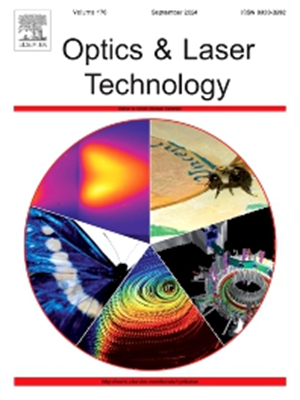基于AWG和超轻量级机器学习模型的高精度宽范围FBG查询
IF 5
2区 物理与天体物理
Q1 OPTICS
引用次数: 0
摘要
光纤布拉格光栅(FBG)传感器以其灵敏度高、结构简单、小型化等优点在环境监测和工业领域得到了广泛的应用。然而,FBG传感信号的高精度检测仍然是一个挑战,因为现有的系统受到有限的动态范围、显著的误差和对昂贵的高精度仪器的依赖的影响,阻碍了片上集成。为了解决这些挑战,我们提出了一种算法-光子协同设计的片上询问系统,该系统将定制的阵列波导光栅(AWG)芯片与基于多项式回归的机器学习模型集成在一起。AWG芯片通过简单的设计进行了优化,避免了额外的制造复杂性,而机器学习算法是超轻的,可以快速训练,并提供高精度。该模型在高斯噪声增强的数据集上进行训练,并通过随机重复测试方法进行验证,确保了鲁棒性和泛化性。实验结果表明,在1537.4 ~ 1561.4 nm的波长范围内,可以实现低至0.45 ~ 0.99 pm的均方根误差(RMSE)。这种具有成本效益,宽范围和高精度的系统显示了现场传感和FBG传感器网络的巨大潜力。本文章由计算机程序翻译,如有差异,请以英文原文为准。
High-Precision Wide-Range FBG interrogation based on AWG and Ultra-Lightweight Machine learning model
Fiber Bragg Grating (FBG) sensors have gained widespread application in environmental monitoring and industrial fields due to their high sensitivity, simple structure, and miniaturization capabilities. However, high-precision interrogation of FBG sensing signals remains a challenge, as existing systems suffer from limited dynamic range, significant errors, and reliance on costly high-precision instruments, impeding on-chip integration. To address these challenges, we propose an algorithm-photonic co-designed on-chip interrogation system that integrates a customized Arrayed Waveguide Grating (AWG) chip with a polynomial regression-based machine learning model. The AWG chip is optimized through a straightforward design that avoids additional fabrication complexity, while the machine learning algorithm is ultra-lightweight, enables rapid training, and delivers high accuracy. The model was trained on a dataset augmented with Gaussian noise-augmented and validated through a randomized repeat testing approach, ensuring robustness and generalizability. Experimental results demonstrate continuous interrogation over a wavelength range of 1537.4 to 1561.4 nm, achieving a root-mean-square error (RMSE) as low as 0.45 pm to 0.99 pm. This cost-effective, wide-range, and high-precision system demonstrates significant potential for field sensing and FBG sensor networks.
求助全文
通过发布文献求助,成功后即可免费获取论文全文。
去求助
来源期刊
CiteScore
8.50
自引率
10.00%
发文量
1060
审稿时长
3.4 months
期刊介绍:
Optics & Laser Technology aims to provide a vehicle for the publication of a broad range of high quality research and review papers in those fields of scientific and engineering research appertaining to the development and application of the technology of optics and lasers. Papers describing original work in these areas are submitted to rigorous refereeing prior to acceptance for publication.
The scope of Optics & Laser Technology encompasses, but is not restricted to, the following areas:
•development in all types of lasers
•developments in optoelectronic devices and photonics
•developments in new photonics and optical concepts
•developments in conventional optics, optical instruments and components
•techniques of optical metrology, including interferometry and optical fibre sensors
•LIDAR and other non-contact optical measurement techniques, including optical methods in heat and fluid flow
•applications of lasers to materials processing, optical NDT display (including holography) and optical communication
•research and development in the field of laser safety including studies of hazards resulting from the applications of lasers (laser safety, hazards of laser fume)
•developments in optical computing and optical information processing
•developments in new optical materials
•developments in new optical characterization methods and techniques
•developments in quantum optics
•developments in light assisted micro and nanofabrication methods and techniques
•developments in nanophotonics and biophotonics
•developments in imaging processing and systems

 求助内容:
求助内容: 应助结果提醒方式:
应助结果提醒方式:


